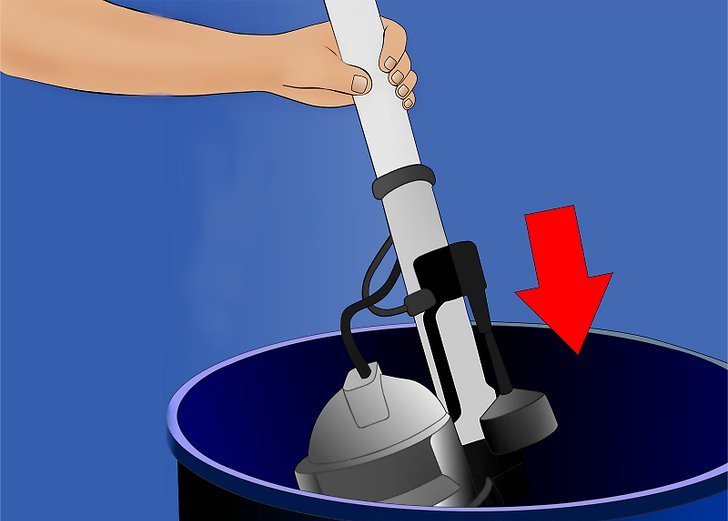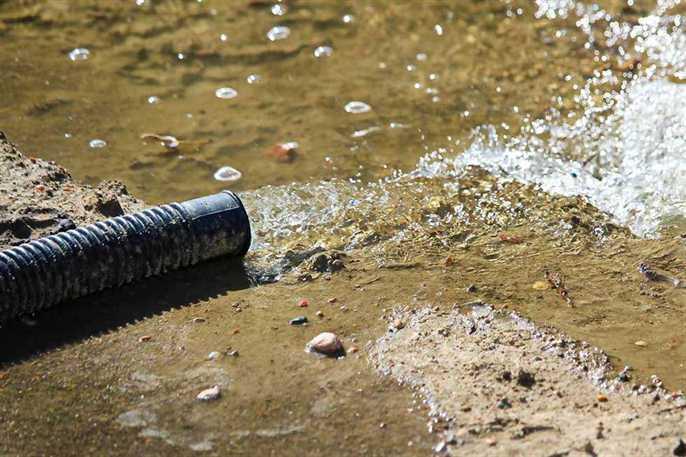Confirmed Methods for Maintaining a Sump Pump
Confirmed Methods for Maintaining a Sump Pump
Blog Article
We've come across this great article relating to How to Care for Your Sump Pump listed below on the internet and think it made perfect sense to quickly share it with you here.

Sump pumps are vital parts in numerous homes, specifically in locations vulnerable to flooding or too much dampness. They help avoid water damage by efficiently eliminating excess water from basements or crawl spaces. Nonetheless, like any other appliance, sump pumps need routine maintenance to ensure they function successfully when required the most. Cleaning your sump pump is an essential part of its maintenance, and recognizing how to do it effectively can conserve you from expensive repairs and possible disasters.
Introduction
Keeping a clean sump pump is vital for its correct performance and longevity. Neglecting this necessary job can bring about obstructions, breakdowns, and eventually, water damage to your residential property. Therefore, discovering how to cleanse a sump pump is vital for home owners that rely on these tools to keep their cellars completely dry and secured.
Comprehending the Sump Pump
Before diving into the cleansing procedure, it's essential to have a basic understanding of just how a sump pump functions. Normally mounted in a pit or container listed below the basement floor, a sump pump consists of several vital parts, consisting of a pump, a float button, and a discharge pipeline. When water collects in the pit, the float switch turns on the pump, which after that pumps the water out via the discharge pipeline, away from the structure's foundation.
Signs of a Dirty Sump Pump
Knowing when your sump pump requires cleaning is crucial for protecting against prospective malfunctions. Some usual indications that show a dirty sump pump consist of odd sounds during procedure, reduced water flow, and noticeable particles in the pit. If you notice any of these signs and symptoms, it's necessary to clean your sump pump immediately to prevent any additional concerns.
Planning for Cleaning
Before you begin cleansing your sump pump, it's vital to take some safety and security precautions. Beginning by shutting off the power to the pump to avoid any type of electric mishaps. Furthermore, use suitable protective gear, such as handwear covers and safety glasses, to shield on your own from dirt, particles, and possible microorganisms.
Detailed Overview to Cleansing a Sump Pump
Shutting Off the Power
Begin by separating the power supply to the sump pump to stop any type of crashes while cleansing.
Removing Debris and Dirt
Use a bucket or a scoop to remove any noticeable particles, dust, or sediment from the sump pit. Dispose of the debris correctly to prevent it from clogging the pump or the discharge pipeline.
Cleansing the Pump and Float Change
Once the pit is free from debris, thoroughly remove the pump from the pit. Check the pump and the float button for any signs of damage or wear. Utilize a soft brush or cloth to clean up the surface areas and eliminate any kind of built up crud.
Purging the System
After cleaning up the pump and float button, flush the sump pit with clean water to remove any remaining dust or sediment. This will help ensure that the pump runs smoothly and efficiently.
Checking for Appropriate Functioning
Prior to reinstalling the pump, carry out a quick test to make sure that the float switch turns on the pump appropriately. Pour some water right into the sump pit and observe the pump's operation. If every little thing is operating correctly, you can reconstruct the pump and reconnect the power supply.
Upkeep Tips to Maintain Your Sump Pump Clean
In addition to periodic cleaning, there are several maintenance tips you can comply with to keep your sump pump in ideal condition:
Verdict
Cleansing your sump pump is an essential element of its maintenance and guarantees that it operates successfully when you need it one of the most. By adhering to the actions laid out in this guide and including normal maintenance right into your regimen, you can expand the life expectancy of your sump pump and protect your home from water damages.
6 STEPS ON HOW TO CLEAN A SUMP PUMP PROPERLY
UNDERSTANDING SUMP PUMPS
Your sump pump plays a crucial role in protecting your home by managing and removing excess water. It primarily functions as a “shield”, guarding your basement against the damaging effects of water accumulation. The pump is housed in a sump pit in the lowest part of your basement, and its job is to pump out any water that collects there.
During heavy rainfalls or when snow melts rapidly, water can infiltrate your basement, posing potential risks like flooding, structural damage, and harmful mold growth. Here, the sump pump springs into action, pumping out the intruding water and directing it away from your home.
SAFETY FIRST
Before cleaning, remember to prioritize safety. Disconnect the sump pump from the power source to prevent any accidental electric shocks. Also, wear sturdy gloves to protect your hands from any sharp or dirty components within the pump.
REMOVE THE SUMP PUMP
After ensuring your safety, the next step is to remove the sump pump from its pit. Doing this might require careful maneuvering as you don’t want to damage any pump components. Once removed, clean the sump pit to remove any accumulated debris or sludge.
INSPECT THE PUMP
Inspect the pump for any visible signs of wear or damage. Check the power cord, float switch, and impeller housing. If any components look worn out or damaged, consider replacing them to ensure optimal performance.
CLEAN THE PUMP
Thoroughly clean the pump with warm, soapy water. Make sure to rid it of any dirt, gravel, or other debris that might impede its performance. You can use a toothbrush to clean the small, hard-to-reach parts of the pump.
REINSTALL THE SUMP PUMP
Reinstall the pump into the sump pit Make sure it’s positioned correctly to remove the water effectively Once it’s back in place, reconnect it to the power source TEST THE PUMP
Finally, pour some water into the pit to ensure the pump works correctly. It should start automatically and begin pumping out the water; if it doesn’t, check the power source and the positioning of the pump.
Remember, while cleaning your sump pump is an essential part of home maintenance, hiring a professional plumber for a thorough inspection and cleaning at least once a year is also important. This will ensure that your pump is in optimal condition, ready to protect your home from potential water damage.
BEST PRACTICES FOR CLEANING SUMP PUMP DISCHARGE PIPES
Regular Inspection: Regularly inspect your discharge pipes, especially during heavy rainfall or snowmelt periods. Look for any signs of blockage or damage. Early detection of problems can prevent serious issues down the line. Periodic Cleaning: Over time, sediment and debris can accumulate in the discharge pipes, impeding the flow of water. Regular cleaning helps keep the pipes clear and functioning efficiently. You can use a high-pressure water jet to effectively clean the pipes. Insulation During Winter: In colder climates, discharge pipes can freeze, blocking the outflow of water. Protect your discharge pipes from freezing temperatures by insulating them with foam pipe insulation. This will ensure the sump pump can continue to discharge water even in freezing conditions. Proper Positioning: The discharge pipe should be positioned to direct water away from your home’s foundation. Improper positioning can lead to water seeping back into the basement. Ensure the pipe is long enough and angled correctly. Installation of a Check Valve: A check valve prevents water from flowing back into your sump pit after the pump has pushed it out. Installing a check valve helps maintain the efficiency of your sump pump and reduces the risk of flooding. Minimize Pipe Turns: Every curve or turn in the discharge pipe can decrease the efficiency of water flow. By minimizing turns and bends in your discharge pipe, you can increase the efficiency of your sump pump. https://www.fullspeedplumbing.com/how-to-clean-a-sump-pump-properly9999/

I stumbled upon that post about Cleaning & Maintenance Tips for Your Home's Sump Pump when doing a lookup on the internet. Sharing is caring. Helping people is fun. Bless you for your time. Please come by our blog back soon.
Request Appointment Report this page